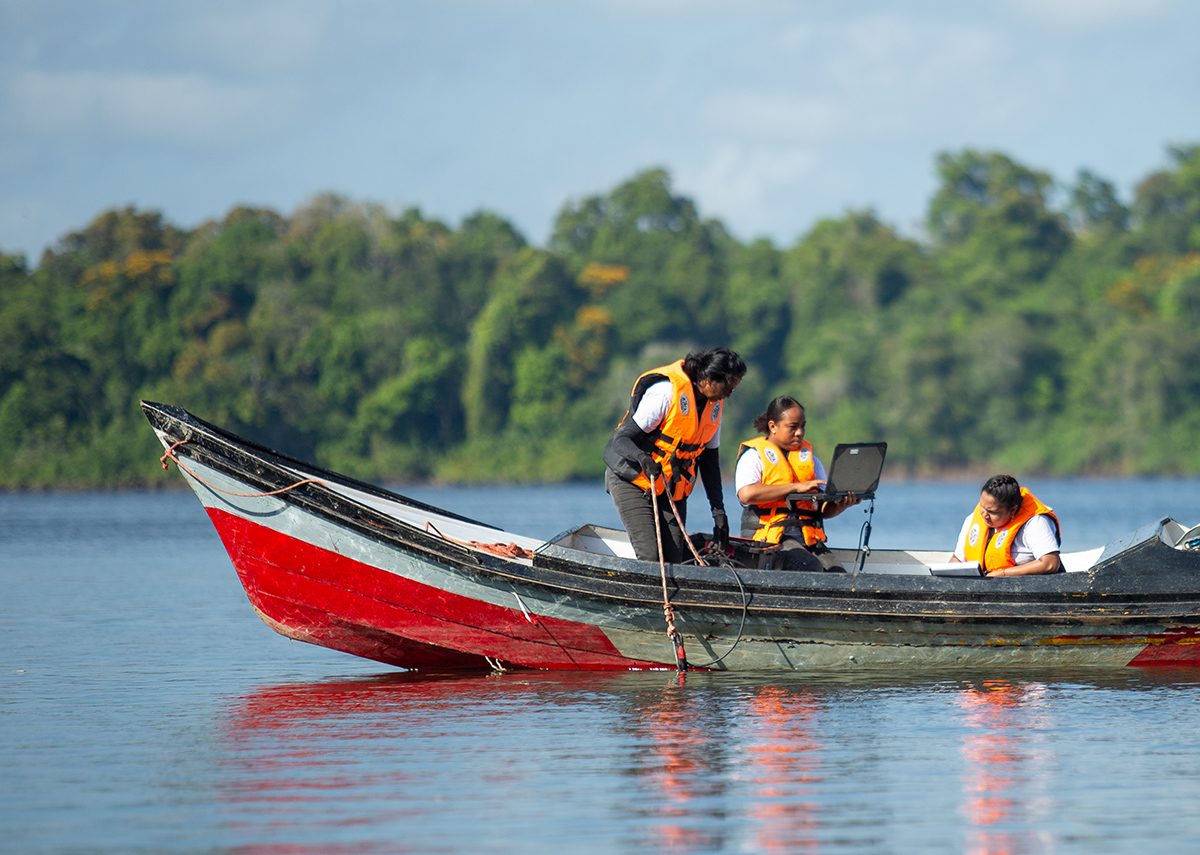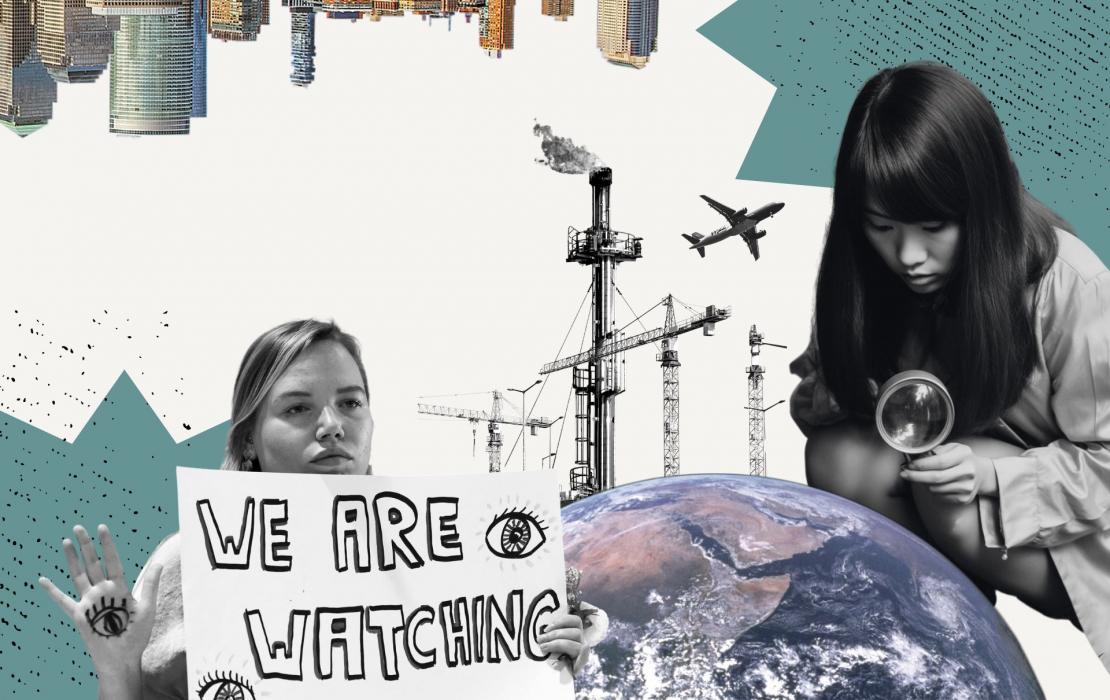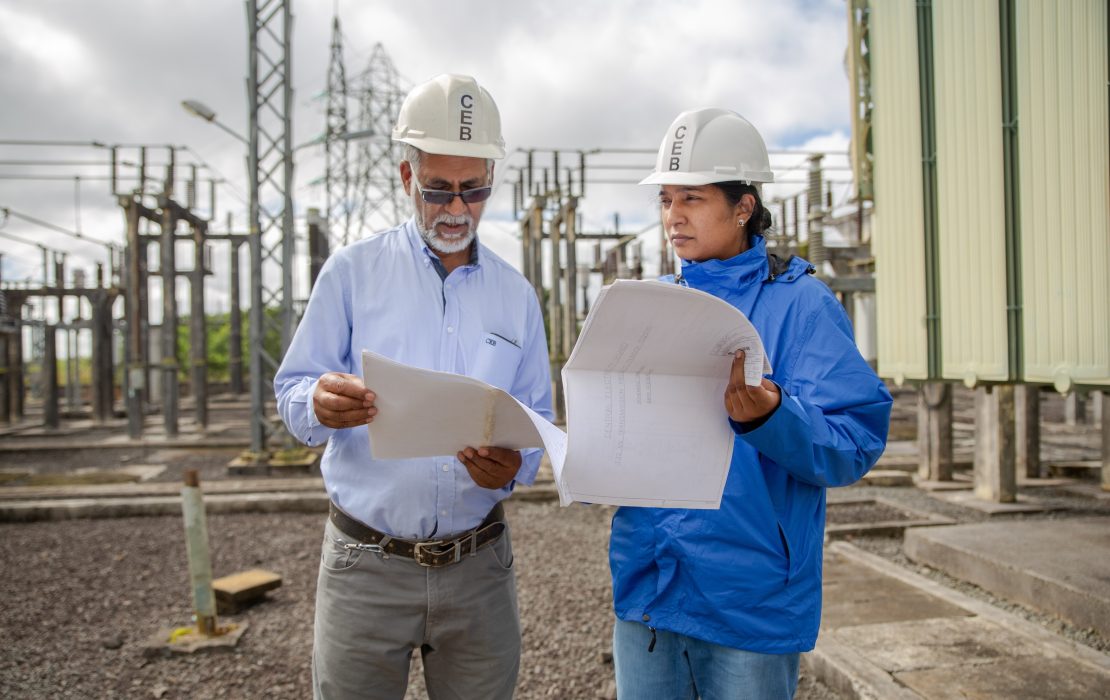
A team of officers from Suriname’s Hydraulic Research Division conducting water quality measurement tests in the Sipaliwini district to assess the effects of climate change. Photo: Harvey Lisse / UNDP Suriname
How can we prove there is progress on stopping climate change? How can we know national commitments on reducing planet-warming emissions are not just promises on paper? How can we trust solutions such as carbon markets and performance-based climate finance that underpin international collaboration on climate action?
These are all questions I have been asked repeatedly during my career as an advisor on climate policy by government officials, private sector representatives, and members of civil society.
There is one excellent answer to all these questions: transparency.
In the context of climate change, transparency refers to the reliable measurement, accessible reporting and expert review of the progress made by countries towards achieving their national climate pledges. It is the weaving thread needed to build trust and confidence that everyone is doing their part to keep global average temperature rise below 2°C, in line with the goals of the Paris Agreement.
Because of its critical role, transparency has been at the forefront of climate negotiations in recent years. It was ubiquitous at COP28, in Dubai, where the secretariat of the United Nations Framework Convention on Climate Change (UNFCCC) led a full-fledged two-week transparency campaign with support from sister UN agencies, including UNDP. Meanwhile, tech giants such as Google and other digital solutions leaders were also highlighting the interconnections between big data, digitalization and transparency. Furthermore, last year, in Baku, the COP29 Presidency released the ministerial Baku Declaration on Global Climate Transparency, which emphasized that enhancing transparency is essential to achieving our climate goals and creating a sustainable future for all.
COP29 also marked the first big milestone for transparency: the submission of the first generation of Biennial Transparency Reports (BTRs). In these reports, countries must provide information on their progress towards achieving the targets in their Nationally Determined Contributions (NDCs), their levels of greenhouse gas emissions, and the external support they have received or provided.
The transparency support that UNDP is offering to developing countries is a huge undertaking – necessitating coordination with others in the UN System, including the UNFCCC secretariat and the Capacity-building Initiative for Transparency – Global Support Programme (CBIT-GSP) led by the UN Environment Programme (UNEP), as well as donors such as the Global Environment Facility (GEF) and Belgium.
Today, with funding from the GEF, UNDP supports 47 countries to develop BTRs, 29 of which have already submitted these to UNFCCC. In addition, we support 35 countries to improve their measurement, reporting and verification (MRV) systems and institutional frameworks through CBIT projects. Lastly, we provide technical support on transparency tools, methodologies and UNFCCC mandates to 35 Francophone and Lusophone developing countries, with financial support from Belgium and in collaboration with UNEP.

Transparency is key to unlocking climate finance for a transformation of our economies that can bring prosperity in line with both climate commitments and sustainable development goals. Photo: Mucyo Serge / UNDP Rwanda
Throughout this journey, I have made an important discovery. Transparency is much more than isolated reporting and review mechanisms. It is also more than a tool to build trust in the implementation of the Paris Agreement. When integrated across government institutions and economic roadmaps, transparency is the key to unlocking climate finance from all sources for an agile, massive transformation of our economies that can bring prosperity in line with both climate commitments and sustainable development goals.
Countries around the world are already becoming aware of the benefits transparency can bring. Here are four examples of countries harnessing the potential of transparency with ambitious purpose:
- Costa Rica is advancing integrated policy agendas. In its first BTR, submitted in December 2024, Costa Rica highlighted how enhancing protected areas and biological corridors, in addition to issuing payments for ecosystem services, are accounting for biodiversity benefits, carbon sequestration and increased adaptive capacity. These measures have been instrumental in helping Costa Rica increase its forest coverage to 60 percent of national territory. The data in the BTR also serves to inform the development of sovereign thematic bonds and green investment funds as financial vehicles for biodiversity and climate action. Moreover, Costa Rica is looking into national policy reforms aimed at mobilizing both public and private investments and is exploring carbon markets as additional sources of finance.
- Brazil is attracting global finance by enhancing investing credibility. Brazil submitted its first BTR in December 2024, allowing international partners and the global investor community to see the strides it is making in reducing emissions, adapting to climate impacts, and efficiently using international financial support. To attract additional support, Brazil has launched the Brazil Climate and Ecological Transformation Investment Platform (BIP), aimed at aligning financial flows with Brazil's updated NDC, which includes a target to reduce greenhouse gas emissions by up to 67 percent by 2035, compared to 2005 levels. The platform strategically uses the information in the BTR, which highlights climate finance needs and key funding gaps, to align its project pipeline with national climate priorities, especially in priority sectors and regions. This can encourage targeted investment and blended finance solutions by highlighting where concessional support is needed to fill funding gaps and reduce investment risks. The BIP can also use the BTR as a benchmark to monitor project impacts on NDC goals and provide transparent reporting to funders. Transparent reporting under the BTR therefore enhances Brazil’s credibility, helping attract international investments.
- Montenegro is strengthening strategic climate planning and regulation. The data collected by Montenegro for its BTR process was used to inform the country’s revised NDC, which was submitted in February 2025, with support from UNDP. Based on tracked progress, Montenegro is strategically aligning the new and more ambitious NDC with the National Energy and Climate Plan (NECP) under the Energy Community framework, supporting the country’s ongoing efforts in preparing for accession to the European Union. The country is also adopting a new Climate Change Law and a Climate Change Adaptation Plan for the 2025–2035 period, reflecting its commitment to international standards. Furthermore, with UNDP’s support under the CBIT, Montenegro conducted an in-depth analysis of institutional needs for climate change reporting across all ministries and relevant institutions. This analysis then served as the basis for designing a comprehensive capacity building programme on planning and reporting for the country’s civil servants. More than 50 participants from different institutions will take part in the first training under the programme in June 2025.
- Lebanon is putting data at the core of climate and development action. As a champion of transparent climate action, Lebanon has developed a comprehensive institutional framework that revolves around collecting, sharing and archiving data related to greenhouse gas emissions, NDC tracking indicators, and adaptation and mitigation measures. This framework helped the country lay the foundation for transparent climate action and informed a series of extensive political and fiscal reforms, which spurred the overhaul of the energy and transportation sectors, emphasizing energy efficiency and sustainable practices. Despite facing compounding crises, Lebanon met the expected deadline for its first BTR, with UNDP’s support and GEF funding, demonstrating that it remains committed to international climate frameworks and upholding accountability. With a strategic future vision, the BTR recognizes the need to integrate the country’s reconstruction and recovery plans with future climate policy. It identifies the opportunities that climate action poses to advance national goals such as poverty eradication, gender equality and food security. UNDP has also helped establish the Lebanon Green Investment Facility which aims to accelerate climate mitigation and adaptation efforts across Lebanon through strategic investments in renewable energy, sustainable agriculture, water conservation and climate-smart infrastructure. UNDP will continue to support this initiative by preparing and assessing its pipeline of interventions, while monitoring their progress through the MRV system.
As all these examples show, improving transparency systems is not only about tracking the reduction of greenhouse gas emissions and increased climate resilience, but also an opportunity to reshape economic and development planning, attract investments and lay evidence-driven groundwork for a sustainable and inclusive future.


